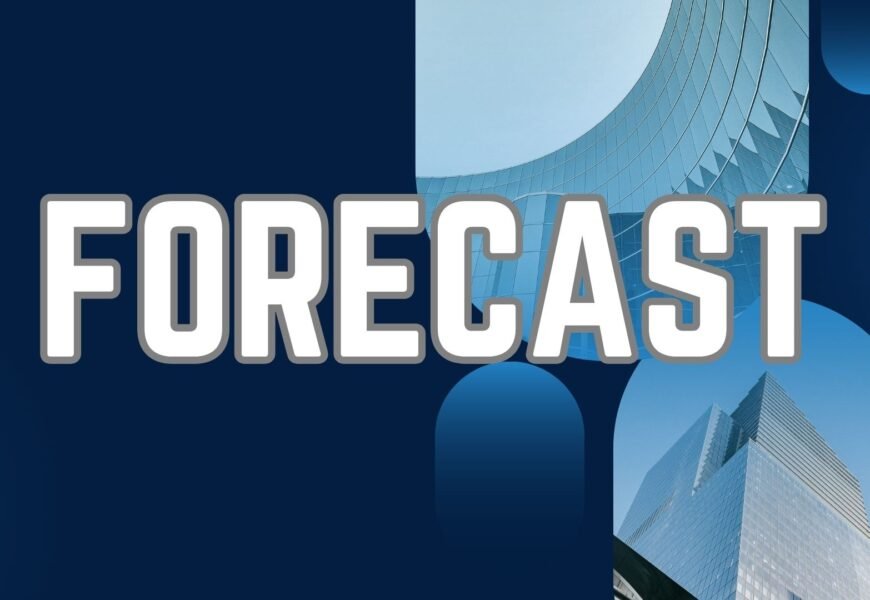Forecasts used to begin with sailors reading clouds and farmers eyeing barometers; today, they start with algorithms crunching terabytes in data centers. In less than a decade, machine-learning models have leap-frogged some of the world’s most sophisticated numerical weather-prediction (NWP) systems, promising faster, cheaper—and in many cases more accurate—results. This article explores how artificial intelligence (AI) is rewriting the forecast, what that means for climate-sensitive industries and communities, and why the next five years will decide whether digital weather becomes the planet’s new early-warning system.
Table of Contents
From Barometers to Big Data: A Brief History of the Forecast
For over half a century, the gold standard in meteorology has been NWP—physics-based models such as the Integrated Forecasting System (IFS) at the European Centre for Medium-Range Weather Forecasts (ECMWF). These models discretize the atmosphere into millions of 3-D grid cells and solve fluid-dynamics equations at each time step. The accuracy is excellent, but the computational price is enormous: a single global 10-day run can consume tens of terawatt-hours of energy.
That bottleneck opened the door to data-driven approaches. IBM’s Global High-Resolution Atmospheric Forecasting System (IBM GRAF) was an early commercial proof of concept, firing off 3 km global forecasts every hour—four to six times more frequently than traditional models—by exploiting GPU acceleration and AI-assisted assimilation techniques. Weather Underground
How AI Learns the Atmosphere
Modern AI forecasters are trained much like large language models; only the “sentences” are 40 years of gridded climate reanalysis.
- GraphCast (Google DeepMind) treats the global atmosphere as a graph, with each node representing a grid point. A graph neural network learns spatial dependencies and spits out a 10-day forecast in under a minute on a single TPU—yet it still beats ECMWF’s flagship model on 90 % of 1,380 verification metrics. Science
- FourCastNet (NVIDIA & partners) applies Fourier Neural Operators to 0.25-degree data. It can generate a week-long forecast in about two seconds, offering the first practical path to massive ensemble runs numbering in the thousands. NVIDIA Docs
- Pangu-Weather (Huawei Noah’s Ark Lab) introduced a 3-D Earth-Specific Transformer that explicitly learns vertical structure. It was the first peer-reviewed model to surpass state-of-the-art NWP across all key variables from one hour to one week. arXiv
Training these systems is expensive, but inference—the day-to-day forecasting step—is lightning-fast, opening transformative operational possibilities.
AI vs. Traditional NWP: An Uneasy Victory Lap
In October 2023, Science reported that GraphCast matched or outperformed ECMWF’s deterministic model for medium-range leads while running 1,000 × faster. Financial media quickly called it a watershed moment: the Financial Times declared that AI had “convincingly outperformed” conventional global forecasts. Financial Times
Yet the contest is not over. Physics-based models still shine at minute-scale convection, upper-atmosphere chemistry, and rare extreme events where historical training data are thin. ECMWF’s Director-General Florence Rabier emphasizes that machine learning will augment rather than replace traditional methods—a “hybrid” future in which AI fills the computational gaps so physics can focus on the most challenging edge cases. ECMWF
Beyond Umbrellas: Real-World Payoffs
Speed and scale are more than academic bragging rights. Utility operators can reschedule crews before an ice storm; commodity traders hedge against heat-driven power demand; drones optimize flight paths through micro-bursts of turbulence.
A recent partnership between the University at Albany and Tomorrow.io illustrates the economic stakes: by fusing satellite imagery, mesonet stations, and AI models, the team aims to cut costly wind forecast errors that today trigger unnecessary power-line callouts and lost revenue across sectors that represent 35 % of U.S. GDP. Times Union
In the developing world—where traditional super-computers are scarce—cloud-based AI services may offer the first reliable forecast many communities have ever had, supporting agriculture, flood preparedness, and disease-vector control.

Climate Intel in Real Time
Fast inference also unlocks what-if analysis: thousands of ensemble members can quantify the odds of tail-risk events, feeding catastrophe-bond pricing or early cyclone evacuations. High-resolution AI models capture local extremes that coarser grids miss, providing better inputs for renewable-energy balancing, wildfire risk, and hydrological planning.
Importantly, the same AI architectures can be transferred to decadal climate projections, accelerating scenario testing for adaptation strategies. The NOAA Earth Prediction Innovation Center’s 10-year plan explicitly calls for “AI-ready” frameworks that knit short-term weather and long-term climate into a single pipeline. Science Council
Clouds on the Horizon: Challenges and Risks
- Data Bias & Gaps: Historic reanalysis over polar regions and the Global South is sparser, risking regional performance disparities.
- Black-Box Trust: Emergency managers are reluctant to rely on forecast they can’t interrogate, prompting research into physics-informed or “glass-box” models.
- Compute-Carbon Paradox: Training state-of-the-art systems can emit hundreds of tonnes of CO₂. While inference is efficient, sustainable training cycles and green data centers will matter.
- Governance & Equity: Who owns a forecast created by private GPUs but built on publicly funded observations? Ensuring open access—like ECMWF’s newly operational AI Forecasting System—will be key to democratizing benefits. ECMWF
Tomorrow’s Forecast: A Collaborative Sky
The likely winner is collaboration, not competition. Hybrid workflows already couple AI’s speed with a lightweight physics correction; citizen-sensor networks feed hyper-local nowcasts, and quantum hardware on the horizon may shrink both training and physics costs. As national agencies rewrite procurement plans, it is increasingly plausible that by 2030, an AI-first workflow will generate the first guess for every operational global forecast, leaving super-computers to polish edge-case extremes.
Conclusion
The word forecast no longer denotes a projection of weather; it has become shorthand for humanity’s evolving dialogue with a data-rich planet. AI has proven it can deliver a faster, often better Forecast while slashing energy costs. The next step is to weave these advances into public warning systems and climate policy so that every community—from coastal megacities to pastoral villages—can act on tomorrow’s insights today.
Frequently Asked Questions
1. Does “AI-powered Forecast” mean supercomputers are obsolete?
No. AI models excel at speed, and many medium-range metrics, but physics-based NWP remains unmatched for rare extremes and upper-atmosphere chemistry. Most agencies are pursuing hybrid systems that integrate both approaches. ECMWF
2. How accurate are AI forecasts compared with traditional methods?
GraphCast outperformed ECMWF’s deterministic model on 90 % of benchmark tests for 10-day forecasts, while FourCastNet and Pangu-Weather report comparable or better skill at shorter leads. ScienceNVIDIA DocsarXiv
3. Will AI forecasts help with climate change adaptation?
Yes. Ensemble-based AI runs can map the probability of extreme heat, flood, or storm events at the neighborhood scale, giving planners finer-grained risk data for infrastructure and insurance. Times Union
4. What’s the environmental cost of training these models?
Training can be energy-intensive, but once trained, AI inference uses a fraction of the power required by classic NWP. Moving to renewable-powered data centers and optimized training cycles mitigates the footprint. Science Council
5. Who regulates AI forecasts?
National meteorological agencies still control public warnings. Private AI providers often supply background guidance, but ultimate authority—and accountability—rests with government services that integrate multiple Forecast sources before issuing alerts.












